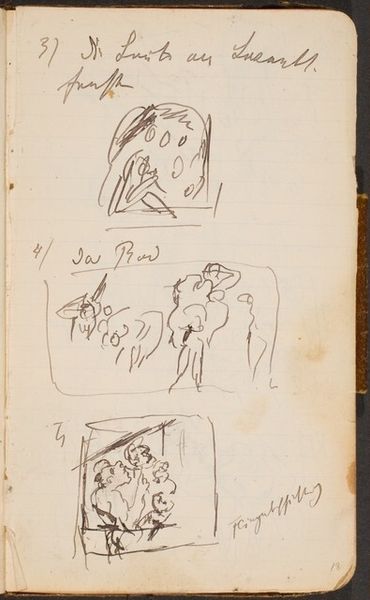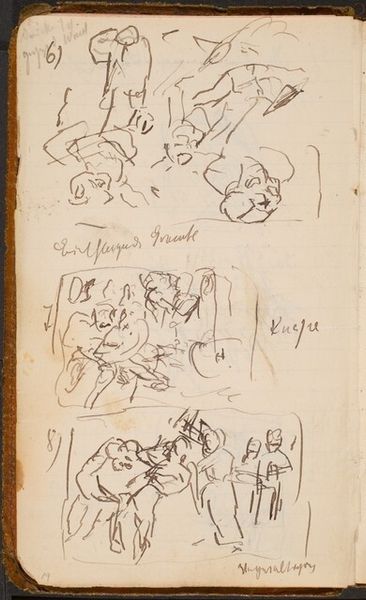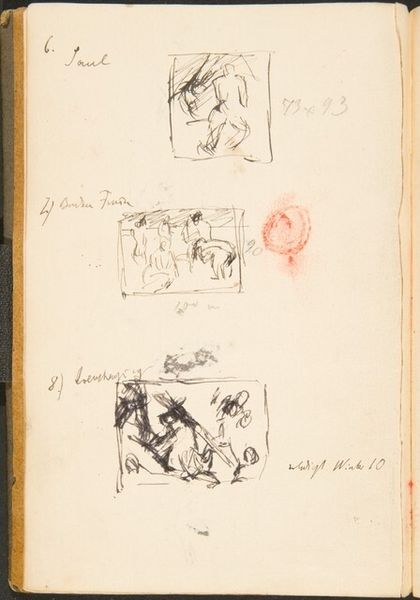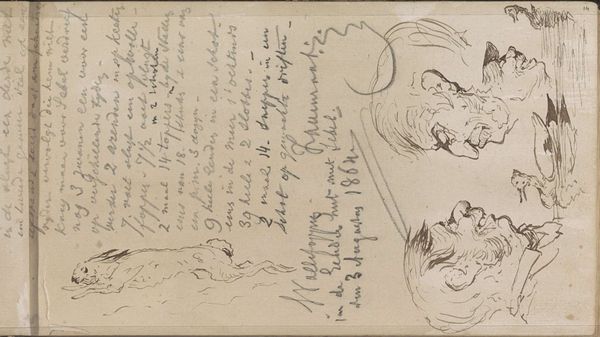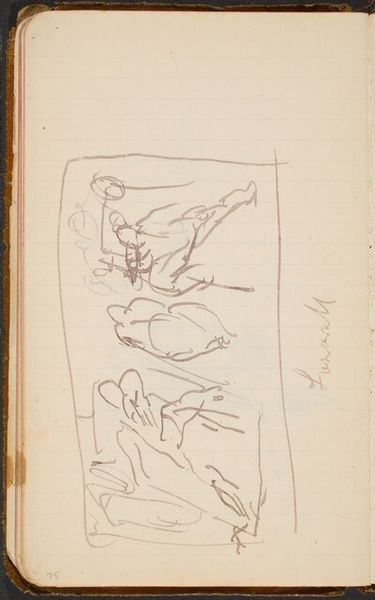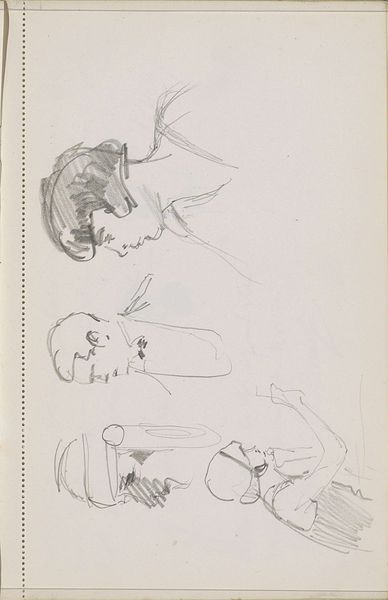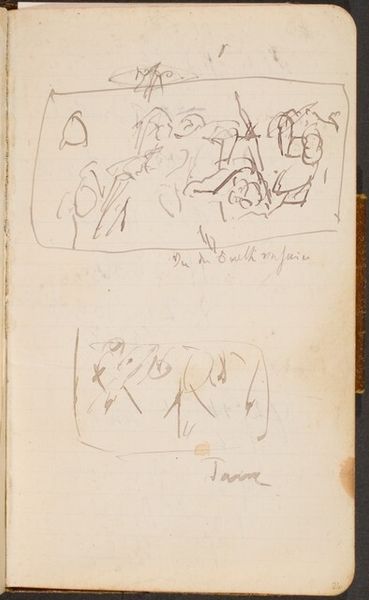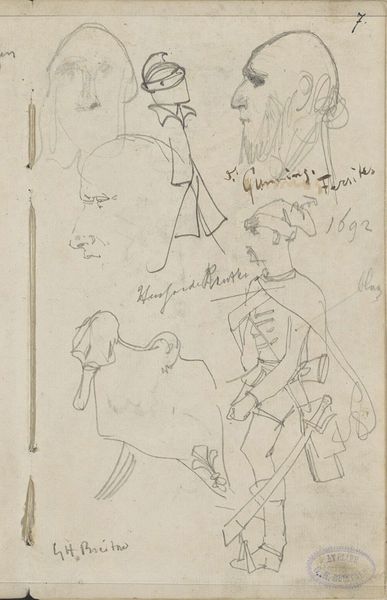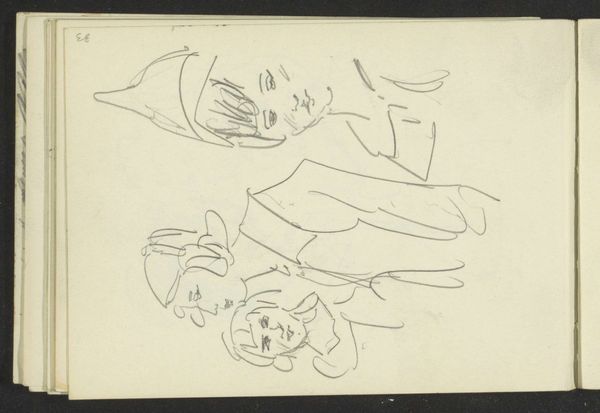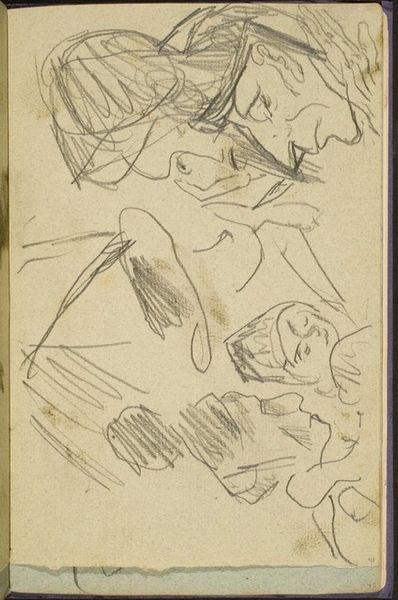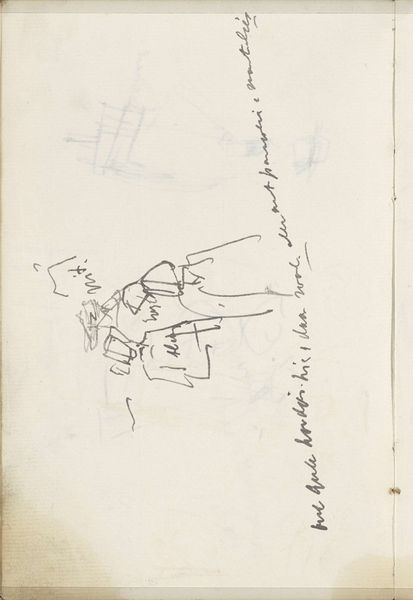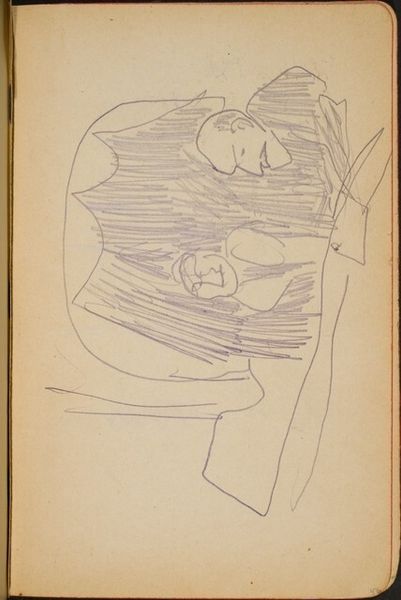![Zwei Skizzen und Notizen (Two Sketches with Notations) [p. 22] by Max Beckmann](/_next/image?url=https%3A%2F%2Fd2w8kbdekdi1gv.cloudfront.net%2FeyJidWNrZXQiOiAiYXJ0ZXJhLWltYWdlcy1idWNrZXQiLCAia2V5IjogImFydHdvcmtzL2IwNjdjM2VjLTFmYjItNDZhYS04MTM0LTQ5Zjk1MWUyMDMwMC9iMDY3YzNlYy0xZmIyLTQ2YWEtODEzNC00OWY5NTFlMjAzMDBfZnVsbC5qcGciLCAiZWRpdHMiOiB7InJlc2l6ZSI6IHsid2lkdGgiOiAxOTIwLCAiaGVpZ2h0IjogMTkyMCwgImZpdCI6ICJpbnNpZGUifX19&w=828&q=75)
Zwei Skizzen und Notizen (Two Sketches with Notations) [p. 22] 1914 - 1915
0:00
0:00
drawing, ink, pen
#
drawing
#
light pencil work
#
pen sketch
#
sketch book
#
german-expressionism
#
figuration
#
personal sketchbook
#
ink
#
sketchwork
#
ink drawing experimentation
#
pen-ink sketch
#
expressionism
#
sketchbook drawing
#
pen
#
storyboard and sketchbook work
#
sketchbook art
Dimensions: page size: 15.2 x 9.5 cm (6 x 3 3/4 in.)
Copyright: National Gallery of Art: CC0 1.0
Editor: Here we have "Two Sketches with Notations," a page from Max Beckmann's sketchbook dating from 1914 to 1915, rendered in pen and ink. There's a raw, almost urgent quality to these quickly drawn figures. What catches your eye, looking at the sketchbook page? Curator: The immediacy of the materials speaks volumes. Pen and ink, humble and readily available, facilitated the rapid capture of ideas. But let's think about the *why* – 1914, the onset of WWI. How might the readily accessible nature of the medium, along with the associated low cost, tie into a moment when resources were diverted and redirected, even in the artistic realm? Were these sketches in any way a way for Beckmann to express his feelings during such conflicts? Editor: That's fascinating. It suggests a direct link between the material constraints of wartime and artistic practice. Curator: Precisely. The sketchbook format itself further underscores this notion of art as direct response. Consider its function: not a polished canvas for a finished work, but a utilitarian object meant for recording and testing, a workspace. And look closely – what does the writing on the page tell us? Can we decipher the context or subject from the notations and in turn examine their purpose or origin, perhaps a glimpse of something we might otherwise overlook? Editor: The notes might offer further details on the locations or specific people pictured in the sketches. Curator: Absolutely, this gives us more opportunity to dive deep into the world around the sketches. Consider the production; were these sketches made while under direct observation of the scene? How do the figures’ shapes and arrangements speak to Expressionist movement with this new material analysis? It shifts our perception of it being simply a sketch, right? Editor: Yes, framing it in terms of materials and process really opens up a new perspective. Thank you for clarifying things. Curator: Materiality isn't just *what* it's made of, it's intrinsically woven into the *why*. By looking at it, we have gained new perspectives of expressionism art from this period.
Comments
No comments
Be the first to comment and join the conversation on the ultimate creative platform.
